Healthy and free: Collect these 6 wild herbs in autumn (+applications)
To benefit from the power of herbs, I present to you my six favorite herbs for salads, healing teas, and snacks in autumn.
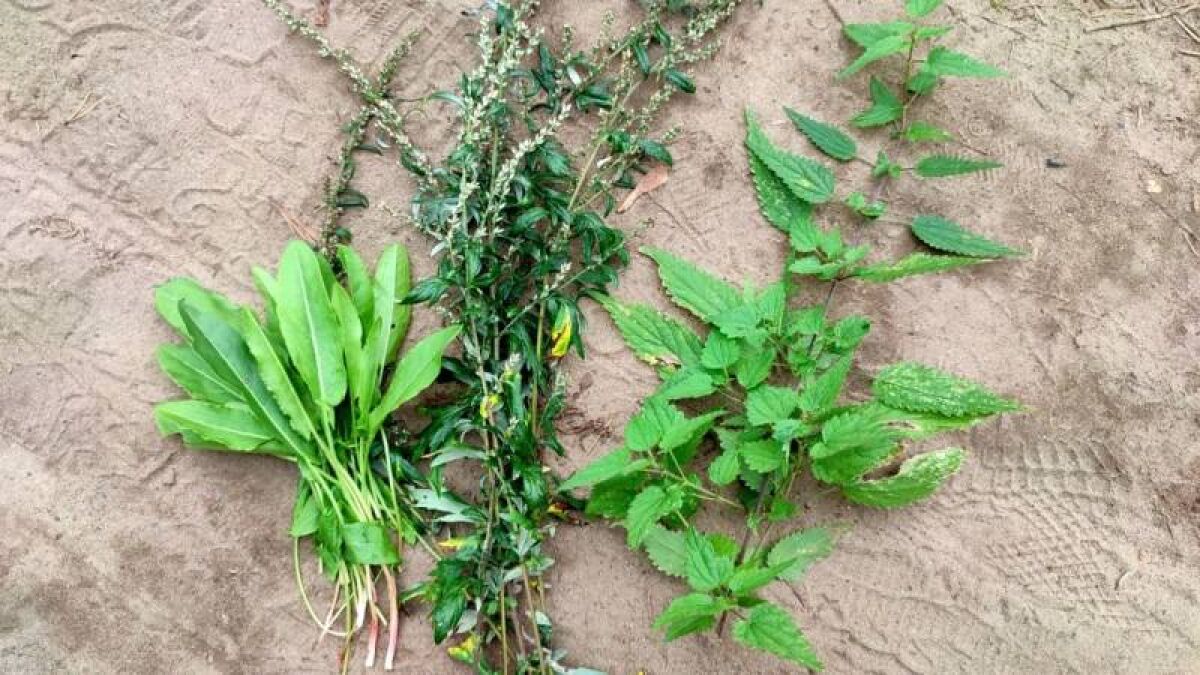

From Martin Gebhardt. Check out my “About me” page.
👉 The key facts from this guide
- Discover 6 wild herbs in autumn: nettle, sorrel, dandelion, plantain, chickweed, and mugwort
- Use wild herbs for salads, herbal teas or protein snacks
- Benefit from the health advantages, such as vitamins, minerals, and healing properties
- Harvest and preserve wild herbs for the winter
- Use wild herbs in various recipes, e.g., pesto, syrup, or oil
- Go outside and collect wild herbs to harness the power of nature
In autumn, I gather the last herbs to preserve them for the winter.
And so that you can also benefit from the power of herbs in winter - or even now - I'll introduce you to my six favorite herbs.
You can make a fresh salad, a healing tea or use them as a protein snack for in between.
The video about the 6 wild herbs in autumn
This guide belongs to the series "Wild herbs in the seasons".
In the video (in German language), I'm on my way and show you the 6 wild herbs.
And if you like watching videos, don't forget to subscribe to my YouTube channel.
There are already countless videos with packed outdoor knowledge uploaded there.
The nettle
How I love this herb!
I especially like the plant as tea, the seeds as a snack while hiking and the young leaves in salad.
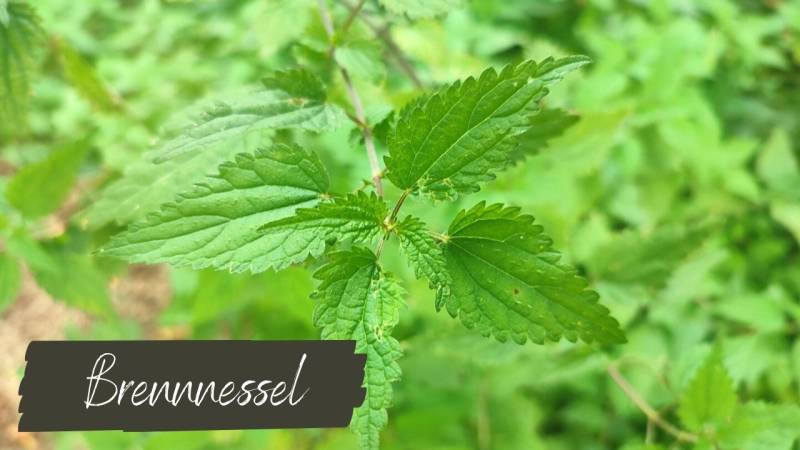
In autumn, you will find the seeds, and it doesn't matter whether you catch a female or male nettle.
The seeds are immediately edible raw, or you can roast them, making them even more nutty. The seeds also work perfectly as a powder - just crush them with a mortar.
You can make all sorts of things out of the nettle:
- young leaves in salad
- as a vegetable like spinach
- in smoothies
- brewed as tea
- nettle risotto
- nettle pesto
- nettle chips
- seeds in meatballs
- nettle soup
- herbed butter
Scared of the stinging hairs? Follow these three tips: briefly boil or flatten with a rolling pin or blend.
What are the medicinal properties of nettle?
Our ancestors already knew about the blood-cleansing and detoxifying effect of the plant. Nettle has a diuretic and purifying effect.
A tea made from the leaves helps with the following:
- bladder infections
- kidney stones
- renal gravel
Nettle is also used:
- for various skin diseases
- to alleviate rheumatism and gout (as powdered fruits)
- for blood formation
- to increase enzyme production in the pancreas
- for digestive disorders
- for gallbladder disease
- for high blood sugar
- for inflammation
How healthy is nettle?
Here's the kicker. Nettle has 333,000 µg of vitamin C per 100 grams.
Sound like a lot? It is – a lemon has only 50,675 µg of vitamin C per 100 grams.
In addition, nettle is highly protein-rich (7370 mg per 100 g, a chicken egg has 11,850 mg of protein per 100 g) and contains the minerals calcium, magnesium, potassium, iron, and silicon.
It also contains vitamin A and the seeds contain linoleic acid (an omega-6 fatty acid) and vitamin E.
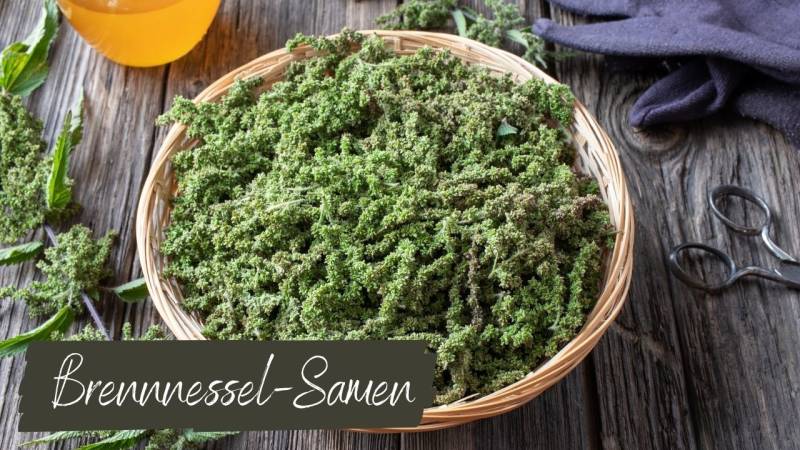
So, save yourself a trip to the supermarket and save the environment. Go to the nearest forest, fallow land or roadside and pick the full power for free.
In my guide to stinging nettle, you can read more facts about this power plant. I'll also tell you why monks were forbidden to eat stinging nettle seeds in the old days.
Sorrel
I often find fresh sorrel leaves in autumn.
And I love a buttered bread with sorrel leaves on top. That's where I taste the freshness of nature.
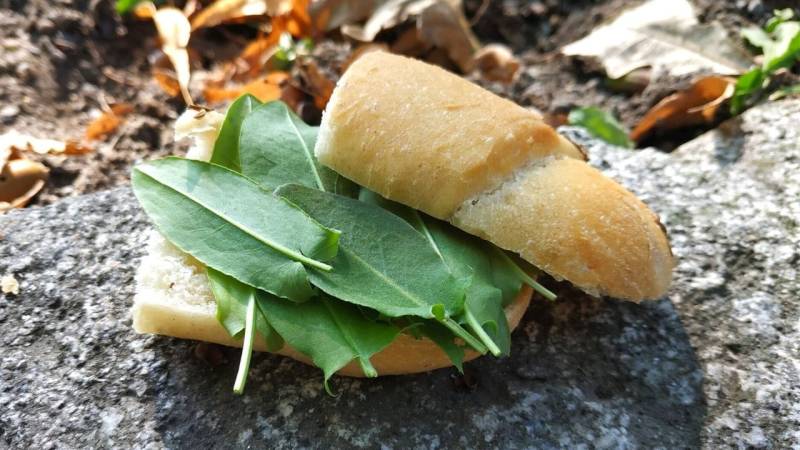
Sorrel is also known as field sorrel, sour weed, and sheep's sorrel. Funny names, aren't they?
It is a member of the knot weed family and is popular as a wild vegetable and medicinal plant.
What can I make with sorrel?
Sorrel tastes, as the name suggests: sour. And that's why it is typically used in the kitchen as a substitute for lemon and vinegar. It goes great with fish, but also in salads, soups, and as a vegetable, it is fantastic.
The leaves and stems of sorrel are edible. It contains a lot of vitamin C. With a 100 g amount, you can absorb up to 117,000 µg per 100 g of the vitamin.
For comparison: a lemon contains only 50,675 µg per 100 g.
Sorrel thus contains twice as much vitamin C as a lemon.
Please don't give children excessive amounts of sorrel, as the consumption of too much can lead to oxalate poisoning.
The redder the leaves and flowers, the more oxalic acid is usually contained. So, it's better to take the fresh shoots.
And since the concentration of oxalic acid in plants increases sharply from flowering onwards, you should not consume large amounts of it overall.
Here's what you can make from sorrel:
- fresh in salad
- sorrel pesto (here's my recipe)
- Frankfurt Green Sauce
- sorrel cream soup
- sorrel purée
- sorrel salad
- stuffed eggs with sorrel
- sorrel oil
- sorrel dressing
- brewed as tea
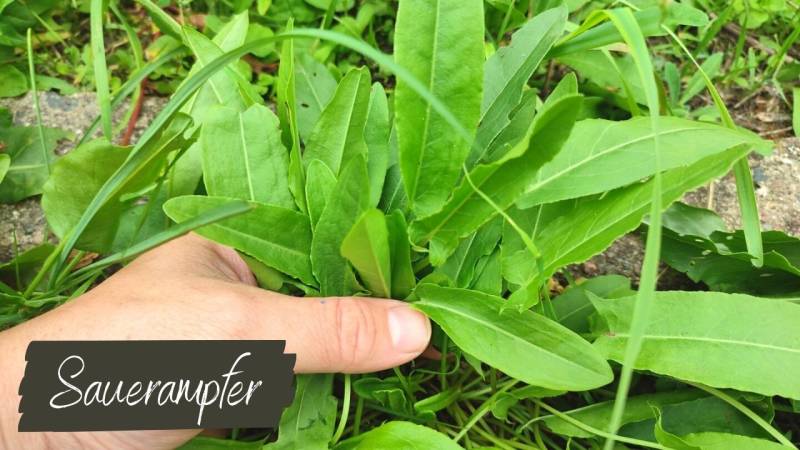
Healing Properties of Sorrel
And since we've already discussed tea, I'd like to introduce you to how healing sorrel can be.
Sorrel is diuretic, blood-purifying, and can neutralize toxins. It is also said to strengthen eyesight, heart, and kidneys.
Can I dry sorrel?
If you dry sorrel, it loses its aroma. It's better to preserve sorrel in the freezer by soaking it in water and freezing it. Sorrel can also be preserved in oil.
Reading tip: Plant profile for sorrel - the vitamin C bomb from nature
The Dandelion
Did you know that the dandelion is a great wild herb plant all year round? Even in January, I pick and eat dandelions.
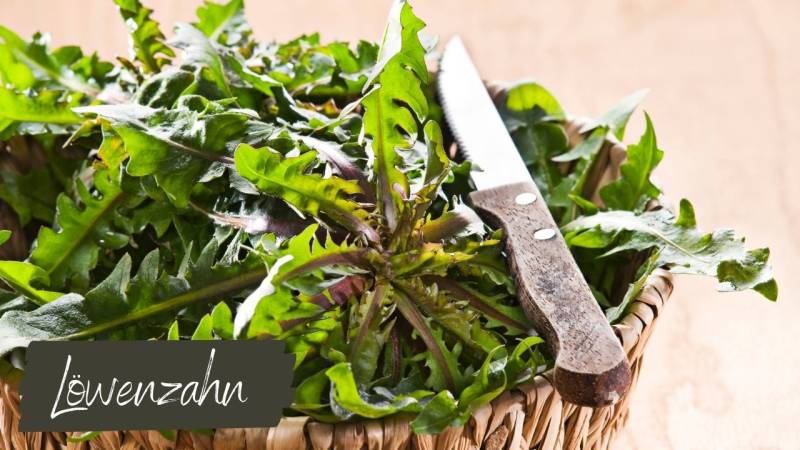
And most people don't know that dandelions are an extremely healthy wild herb. The plant with the yellow flowers contains many vitamins and nutrients – especially vitamin K (read more about micronutrients in herbs here).
And I have to emphasize this again: there is no other wild plant that contains as much vitamin K as dandelions.
In addition: 100 grams of dandelion are enough to cover half of the daily requirement of vitamin C.
What does dandelion help against?
Dandelion is a great medicinal herb, for example:
- helps against liver, kidney and intestinal diseases
- helps against swelling, skin problems and heartburn
- regulates blood sugar
- lowers cholesterol levels
- cleanses the blood
- against bloating and feeling full
The root of dandelion as an extract is even said to be able to fight cancer cells, but there are no studies on humans yet.
What can I make from dandelion?
Dandelion is versatile. It tastes delicious both raw and steamed or cooked. Its leaves are somewhat similar to arugula.
Everything on the plant is edible, even the white milky sap from the stem is not poisonous. However, you should not eat too much of the milky sap.
Take a look, this is what you can make from dandelions:
- in salads
- brewed as tea
- cooked as spinach
- in smoothies
- roots used as coffee substitute
- flowers for tinctures and in wines
- syrup made from the flowers
- eat the buds as a snack
- prepare roots like black salsify
So go ahead and snack on the last leaves of autumn. Preferably, where dogs are not taken for a walk.
For more information on dandelion, take a look at my guide on this survival plant.
The Rib wort Plantain
You just can't ignore the lungs of the plant, also known as Rib wort Plantain, and for good reason.
Rib wort Plantain is a perennial herb that has been used for centuries as a folk remedy for a variety of ailments.
It contains a substance that has healing properties, and is also rich in vitamins and minerals, making it both a nutritious food and a medicinal herb.
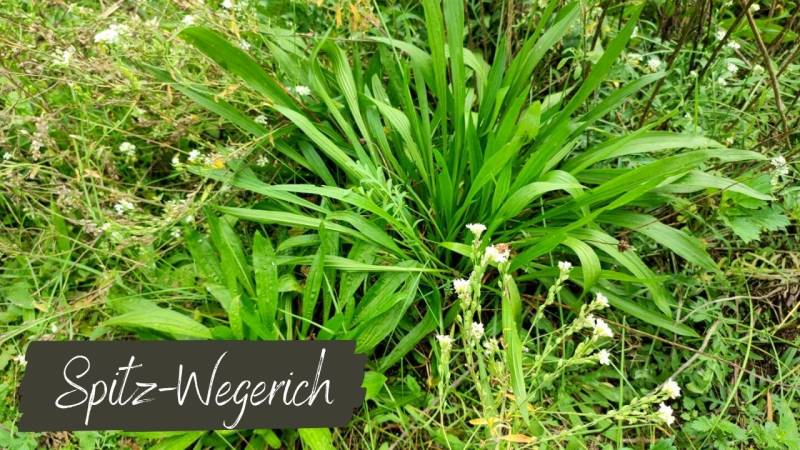
Rib wort Plantain helps with coughs, bronchitis, lung diseases, and asthma.
I have collected Rib wort Plantain in May for my syrup, and it's just right in the fall now. Find the recipe here.
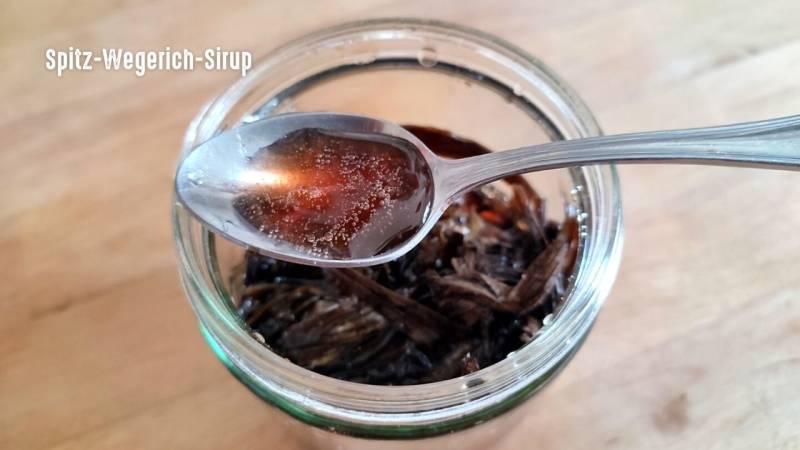
The Healing Power of Rib wort Plantain
- Treating pneumonia or cough: Plantain is a well-known herbal remedy for treating pneumonia and other respiratory problems such as lung infections, allergies, and asthma. Plantain syrup helps with coughs and sore throats. Plantain has a calming, anti-inflammatory, and soothing effect. Our ancestors used plantain syrup to treat bronchitis, lung disorders, and coughs. Plantain contains mucilage, which forms a protective layer on the irritated mucous membranes. Additionally, silica strengthens damaged tissue.
- Treating insect bites: If you are bitten by a tick, snake, spider, or other venomous insect, you can use plantain as an anti-toxin and anti-venom.
- Calms Burns: If you have burned yourself, one of the first steps is to apply burn cream to the damaged area. However, if it's not available, you can also use plantain as a substitute.
- Use it to stop bleeding: Plantain also helps to stop bleeding, making it great for wound healing. This natural "bandage" slows down blood loss and helps your wound heal faster.
- Use as an anti-inflammatory: Plantain is anti-inflammatory and can be used to reduce swelling from bites and stings. Its anti-inflammatory properties also make it good for allergy sufferers. This is particularly helpful for bee allergies.
- Disinfecting wounds: Plantain is also a natural antibiotic. Use it to disinfect wounds before wrapping wounds to prevent infections or to overcome current infections.
Attention: If bitten by a snake, seek medical help immediately. As an allergy sufferer, always carry your Epi-Pen. While wild herbs such as plantain can support you, they do not replace a doctor.
Let's take a look at how to consume plantain:
- Infuse a tea
- Cook or steep as a syrup
- Use dried as a spice
- Eat as a salad
- Apply to relieve itching from mosquito bites
Plantain tastes somewhat like mushrooms, especially the buds and flowers.
Almost all parts of plantain are edible. Here are the edible parts:
- Leaves, shoots, and stems
- Flowers and buds
- Seeds and fruits
Roots are best boiled to make them soft, seasoned with salt or other spices.
Seeds and fruit are particularly good in autumn. You can harvest them from August to October. And from October to April, you harvest the roots.
Fun fact: Where does plantain get its name? The word "plantain" is from the Old High German "wega" meaning "way" and "rih" meaning "king". It is therefore the "way ruler".
Chickweed
Chickweed is one of my favorite edible wild plants. You can find it all over the planet, it tastes delicious, and it's healthy.
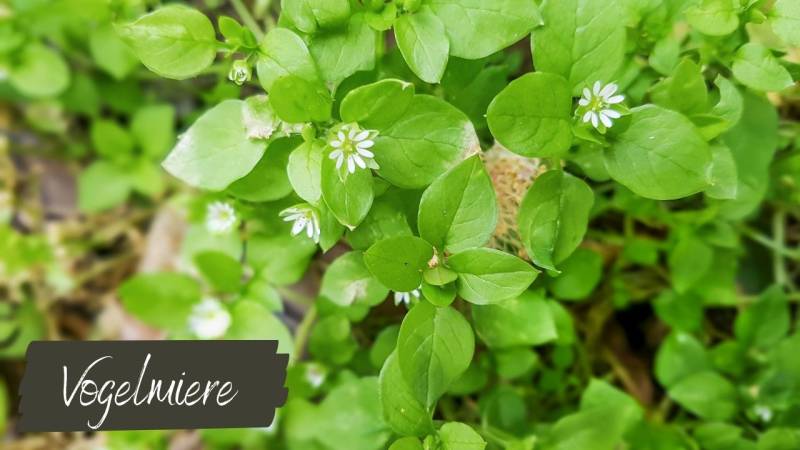
You can eat chickweed raw or cooked. All parts of the plant are edible - leaves, stems, flowers, or fruits.
Note: The stems become tough in fall and are not edible.
The fact is: Chickweed contains:
- Twice as much calcium as lettuce
- Three times as much potassium and magnesium as lettuce
- Seven times as much iron as lettuce
- At least twice as much vitamin A, C, B1, B2, and B3 as lettuce
Here's what you can make from chickweed:
- in salads
- as pesto
- in soups
- as a smoothie
- as wild herb salt
- in wild herb dip
- as herb cream cheese
- as chickweed oil
- for a healing salve
How can Chickweed help you as a medicinal herb?
In the wild, chickweed is used to treat skin rashes, burns, scrapes, and minor cuts.
The plant has cooling, anti-inflammatory, pain-relieving, and digestive properties.
Crush the chickweed to release its juice and apply it to the wound. You can also wrap the crushed chickweed in a bandage.
Additionally, chickweed can be used as a tea for bronchitis and respiratory infections. As a freshly pressed juice (nowadays referred to as a smoothie), chickweed is said to support liver function.
Can Chickweed be mistaken for other plants?
Chickweed can be mistaken for other weeds, such as starwort. But don't worry, starwort is also edible and non-toxic.
Read my comprehensive guide to the medicinal plant chickweed.
Mugwort
Mugwort is an ancient spice, and you can harvest it abundantly in late summer and autumn.
Listen to its other names: maidenwort, power root, and thunder plant. Amazing, right? That sounds like a lot of power.
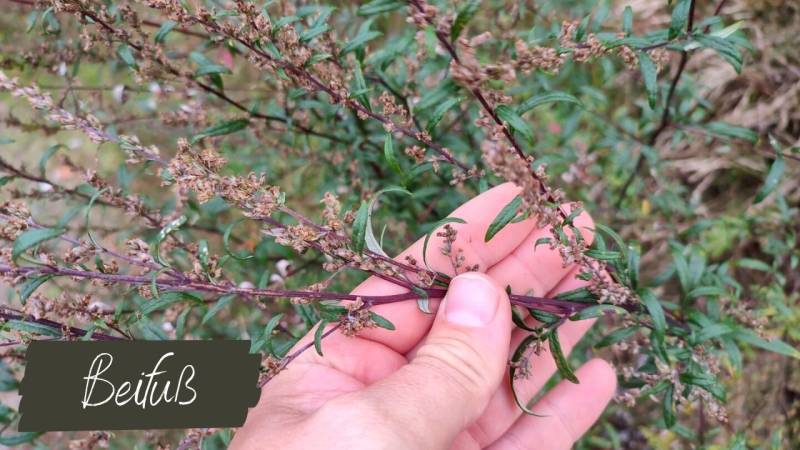
What are the medicinal properties of Mugwort?
And Mugwort is also a powerful plant, as it has antibacterial, relaxing, soothing, disinfectant, antispasmodic, parturient, and digestive properties.
This means that Mugwort can help with the following:
- Epilepsy
- Urinary tract infections
- Gallbladder diseases
- Fear of flying
- Cold feet and tired legs
- Gastritis
- Stomach cramps
- Menstrual problems
- Rheumatism
- Sleep disorders
- Inflammation
Awesome, right? What kind of magical herb is this?
Do you know what symbolism the ancient Germans and Celts associated Mugwort with? Strength, mental power, and protection.
This means that the plant was used for protection against curses and spirits. Mugwort is therefore a magical power plant.
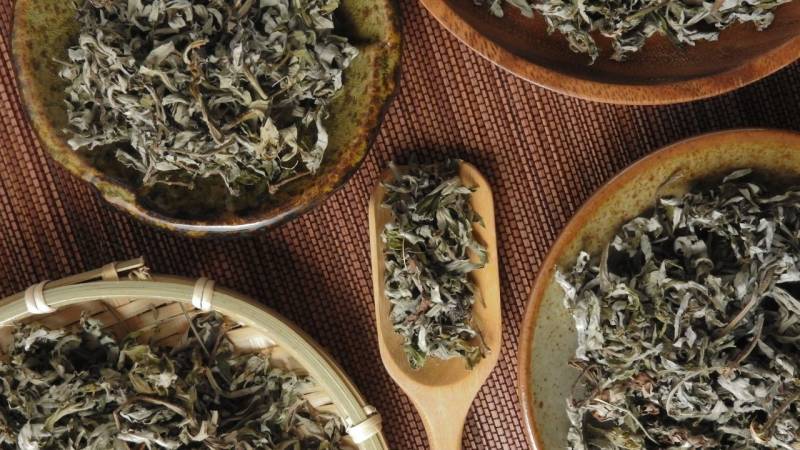
What can I make from Mugwort?
You may know Mugwort as a herb for greasy dishes. Especially with goose, eel, and pork, people like to add Mugwort to simplify fat digestion.
Because, Mugwort stimulates the secretion of stomach acid and bile. But please use in small quantities, as the dish otherwise becomes too bitter.
But I want to go into even more detail because the essential oils of Mugwort are very potent. They are full of bitter substances, flavonoids, inulin, and camphor oil.
So, you can make the following from Mugwort:
- brewed as tea (max. 3 cups (0.71 l)/day)
- as a tincture made from the roots
- as an ingredient in fatty foods
- used for smudging to ward off evil spirits and purify (and also for relaxation)
- as an oil for tired legs, rheumatism, and tension (find the recipe here)
- in pies and terrines
Caution: Do not consume mugwort if pregnant, as it can trigger contractions.
And in autumn: Older flowers and leaves contain significantly more bitter substances, and it is better to consume less of them.
You can use fresh or dried mugwort. I hang the long plants in my office and let them dry for 2 to 3 weeks. Then I transfer the leaves to a jar. The tea is ready for winter.
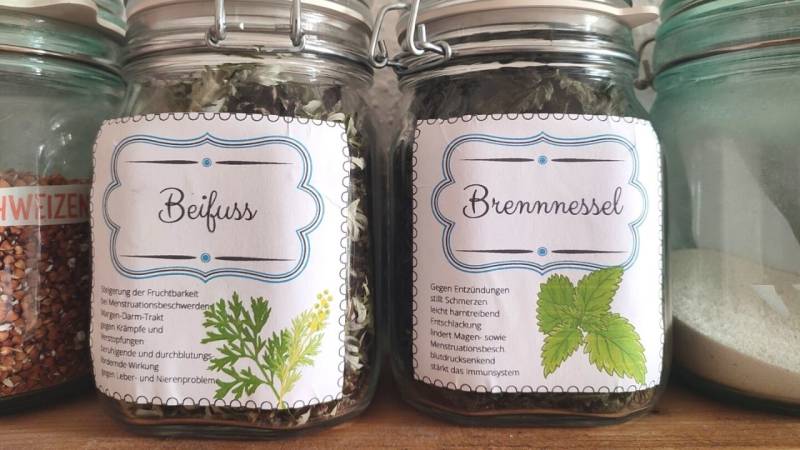
Recipes for Mugwort, Sorrel, and Rib wort Plantain
Find the recipes in my database:
Now I suggest you go outside and collect wild herbs. It will be enough for a nettle tea at least.
And I hope that you taste the wilderness in your homemade foods, and they give you strength.
Find even more forest knowledge in my ultimate guide to edible plants.
What other wild herbs do you know that can be harvested in autumn?

Sources for the guide
https://www.vitamine.com
https://buecher.heilpflanzen-welt.de
https://www.qrsml.de/heilpflanzengarten/heilpflanzengarten-132/
https://ptaforum.pharmazeutische-zeitung.de/ausgabe-122012/heilpflanze-vom-wegesrand/
https://www.donaukurier.de/archiv/entzuendungshemmende-heilpflanze-der-spitzwegerich-3420426
https://elmaskincare.com/articles/herb_plantain_narrow.htm
https://www.naturalremediesandcures.co.uk/268,remedies,Herbal_Remedies,plantain_herbal_remedy_for_snake_bites_snake_bites.html
https://www.wildfooduk.com/edible-wild-plants/ribwort-plantain/
https://www.newburyfarms.com/blogs/news/plantain-weed-the-most-useful-ubiquitous-plant-in-your-backyard
https://www.wildedible.com/wild-food-guide/plantain

Author of the guide
Martin Gebhardt
Hey, I'm Martin. On my blog, you will learn the basics and numerous details about living in the wild. I think survival, bushcraft and the good life in nature are the keys to happiness. Find me here on Instagram or on YouTube. You can find more about my mission on the About Me page.
Was this guide helpful?
34 people found this guide helpful.
4.89 out of 5 points (35 Ratings)
Comments (0)
This post may contain affiliate links. So if you click on the links and make a purchase, I will receive a small commission at no additional cost to you. Click here, to learn more about it.



